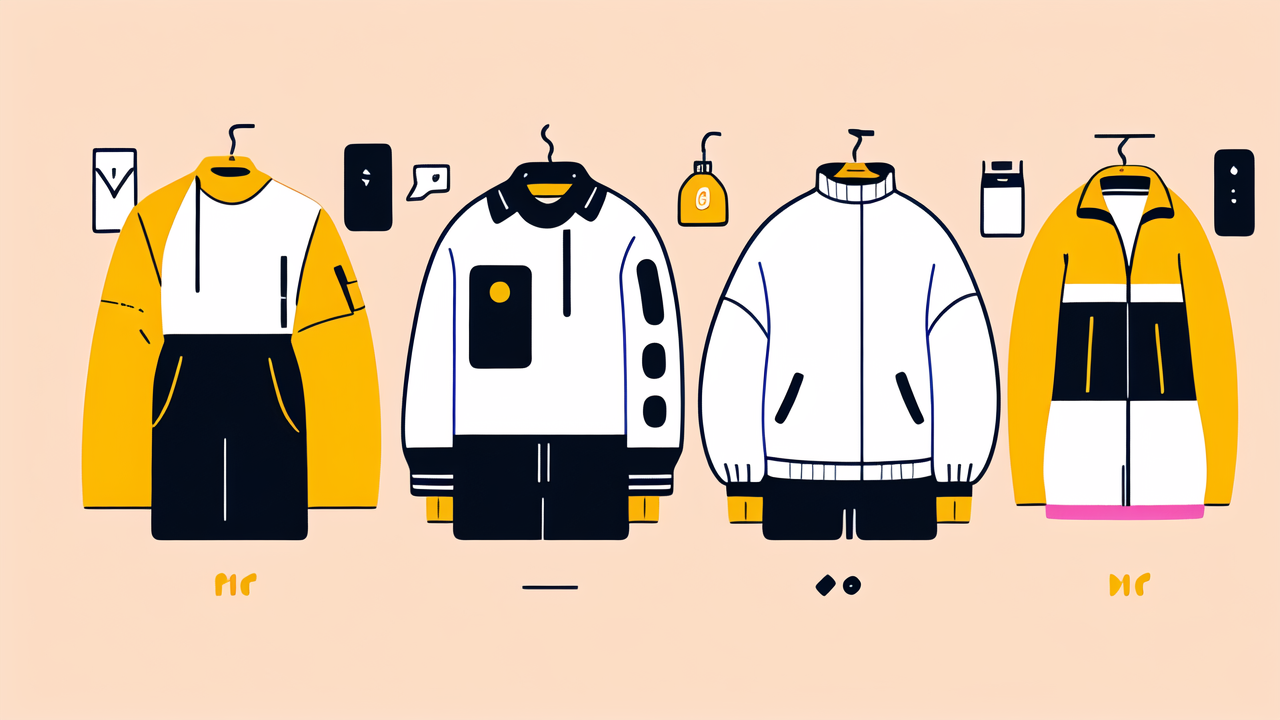The Evolution of Fashion in the Wearable Technology Era
The Journey from Fashion Shows to Wrist Wearables
Fashion has come a long way from traditional runway shows to high-tech wrist wearables. The journey began with simple accessories like watches and evolved into smart devices. Today, we see a blend of style and function in wearable tech. Brands like Fila have entered the smartwatch market, offering trendy designs with advanced features. These devices track fitness, monitor health, and even display notifications. The fusion of fashion and technology has redefined how we accessorize and interact with our gadgets. Wearables are no longer just functional; they're stylish statement pieces that complement our outfits.

How Wearables Clothing is Changing the Game in Fashion
Wearables clothing is revolutionizing the fashion industry in unprecedented ways. Smart fabrics with embedded sensors can now monitor vital signs and adjust temperature. LED-embedded garments allow wearers to change colors and patterns with a tap on their smartphone. These innovations are not just novelties; they're reshaping how we think about clothing. Designers are now considering both aesthetics and functionality in their creations. This shift is creating new opportunities for cross-industry collaborations between fashion houses and tech companies. The result is a new category of products that are both fashionable and technologically advanced.
The Impact of Technology on Consumer Fashion Choices
Technology has significantly influenced how consumers approach fashion. With the rise of wearables, people now consider tech features alongside style when making purchases. Smart clothing and accessories offer convenience and personalization that traditional fashion cannot match. Consumers are drawn to items that not only look good but also enhance their daily lives. This trend has led to a growing demand for multi-functional fashion pieces. Brands that successfully integrate technology into their designs are seeing increased consumer interest. The impact is clear: technology is now a key factor in fashion decision-making for the modern consumer.
Analyzing the Market: Key Players and Innovations in Wearables Clothing
The Leading Brands in Wearable Fashion Technology
Several brands have emerged as leaders in the wearable fashion technology space. Fila, known for its sporty aesthetic, has entered the market with stylish smartwatches. These devices combine Fila's signature design with advanced fitness tracking features. Other major players include tech giants like Apple and Samsung, who've made significant strides in smartwatch design. Fashion brands like Michael Kors and Fossil have also launched their own lines of smart accessories. These companies are blending their fashion expertise with cutting-edge technology to create appealing products. The competition in this space is driving innovation and pushing the boundaries of wearable fashion.

Breaking Down the Success Stories of Wearables Clothing Innovations
Successful wearables clothing innovations often combine practicality with style. One standout example is the Levi's and Google collaboration on the Jacquard smart jacket. This jacket allows wearers to control their phone with simple touch gestures on the sleeve. Another success story is the Nadi X yoga pants, which use vibrations to guide users through yoga poses. These innovations demonstrate the potential of integrating technology seamlessly into everyday clothing. The key to their success lies in solving real problems while maintaining a fashionable appearance. As these products gain popularity, they pave the way for further advancements in wearable technology.
How Startups are Disrupting the Wearables Clothing Scene
Startups are playing a crucial role in driving innovation in the wearables clothing industry. These agile companies are often quicker to market with new ideas and technologies. For example, Sensoria Fitness has developed smart socks that provide detailed running metrics. Another startup, Hexoskin, offers smart shirts that monitor heart rate, breathing, and movement. These companies are filling niche markets and addressing specific consumer needs. Their success is prompting larger brands to take notice and invest in similar technologies. Startups are thus shaping the future of wearables clothing by pushing the boundaries of what's possible.
Future Trends: The Direction of Wearables Clothing in the United States
Predicting the Next Big Thing in Fashion Wearables
The future of fashion wearables is likely to focus on seamless integration and enhanced functionality. We can expect to see more clothing with built-in sensors that adapt to our body's needs. Smart fabrics that change color or pattern based on mood or environment are on the horizon. Voice-activated clothing that can make calls or send messages may become commonplace. Augmented reality integration in eyewear and clothing is another exciting possibility. These advancements will blur the line between fashion and technology even further. The goal is to create wearables that are indistinguishable from regular clothing while offering advanced features.

The Role of Sustainability in the Growth of Wearables Clothing
Sustainability is becoming increasingly important in the wearables clothing industry. Consumers are demanding eco-friendly options in all aspects of fashion, including tech-integrated pieces. This trend is driving the development of biodegradable electronics and recyclable smart fabrics. Some companies are exploring ways to use solar energy to power wearable devices. Others are focusing on creating long-lasting products to reduce electronic waste. Sustainable practices are not just good for the environment; they're becoming a key selling point. As the industry grows, we can expect to see more emphasis on green technologies and sustainable manufacturing processes.
The Influence of Market Consumer Behavior on Wearables Clothing Development
Consumer behavior is shaping the development of wearables clothing in significant ways. People are seeking personalized experiences and customizable features in their tech-integrated fashion. This demand is driving the creation of modular wearables that can be tailored to individual preferences. Privacy concerns are also influencing design, with a focus on secure data storage and transmission. Consumers want wearables that seamlessly fit into their lifestyle without being intrusive. This preference is leading to more discreet and elegant designs in smart clothing and accessories. As consumer needs evolve, so too will the features and designs of wearables clothing.




Leave a comment
This site is protected by hCaptcha and the hCaptcha Privacy Policy and Terms of Service apply.